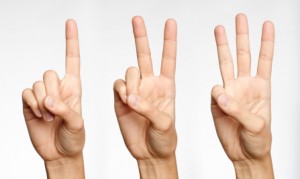More Women, Smarter Teams
 The title says it all: to help teams perform better, add more women. An intriguing research project highlighted in the June 2011 issue of the Harvard Business Review by Anita Woolley of Carnegie Mellon and Thomas Malone of MIT suggests what makes teams smarter: having more women on them. The study also points out some things which you might intuitively think would help, but don’t.
The title says it all: to help teams perform better, add more women. An intriguing research project highlighted in the June 2011 issue of the Harvard Business Review by Anita Woolley of Carnegie Mellon and Thomas Malone of MIT suggests what makes teams smarter: having more women on them. The study also points out some things which you might intuitively think would help, but don’t.
In contrast to some earlier studies which used surveys to get feedback from team members, this research examined teams’ performance on solving puzzles and completing team tasks in the lab. The researchers studied almost 200 teams, with randomly assigned members. Each team was given tasks to complete, including puzzles, brainstorming, decision-making and solving complex problems. Woolley and Malone then compared the results of the task-completion to other factors like individual intelligence and group cohesion.
Individual Intelligence Didn’t Matter
It turned out that the sum of the parts did not equal the whole; teams with members who collectively scored higher on standard IQ tests were not the “smartest” teams. Group cohesion, group satisfaction and other factors we might think would contribute to smarter teams didn’t correlate with performance either.
More Women = Smarter Teams
The one factor which stood out in the research was that the higher the percentage of women in the team, the better the results in team IQs. The researchers suggest that their findings go beyond “diversity in teams is good;” the data indicates that except at the very extremes, where performance flattens out, the more women on the team the better for the team IQ.
The researchers speculate that this may be due to generally higher social awareness in women, a contributing factor to smarter teams, or to other factors not yet identified.
Five to Fist and the Blogojevich Jury
One fascinating clue to women on teams and how they make decisions is provided by a look inside the Blogojevich jury, made up of eleven women and one man. Jezebel wrote that instead of taking an immediate up or down vote on various counts, the jury used a teacher’s device of “five to fist” – hold up five fingers if you completely agree, a fist if you completely disagree, and 2, 3 or 4 fingers to indicate that you’re somewhere in between.
In the Chicago Tribune Mary Schmich suggests that:
The jurors reached their decisions with no bullying, no shouting, no pouting. A colleague of mine who has covered a lot of trials said she’s never seen a jury build agreement through so many shades of gray.
My take-away? Make sure your teams have plenty of women, and oh, while you’re at it, try “five to fist” for coming to consensus.
